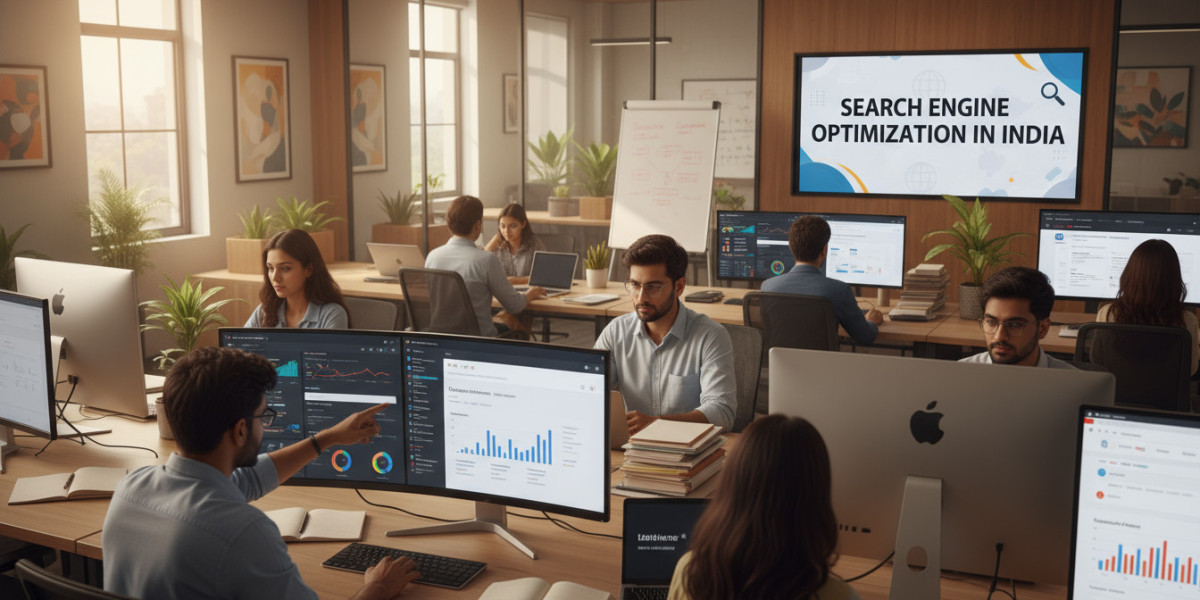In the ever-evolving digital marketing landscape, Google’s algorithm updates have consistently shaped how businesses rank online. These updates aim to improve the user experience by refining how search results are displayed, ensuring that only the most relevant and high-quality content appears at the top. For businesses involved in Search Engine Optimization in India, understanding these updates is not just beneficial — it’s essential.
In this blog, we’ll take a detailed look at what Google algorithm updates are, explore their historical evolution, understand their impact on SEO practices in India, and learn how brands like Adomantra strategically adapt to these changes to ensure lasting online visibility and growth.
1. Understanding Google Algorithm Updates
Google’s search algorithm is a complex system that retrieves data from its index and delivers the best possible results for a query. To make search results more accurate, Google frequently rolls out updates — some minor, others major — that redefine SEO standards worldwide.
Each update has a specific focus: some prioritize page experience, others improve content relevance or penalize spammy practices. These algorithm changes directly influence website rankings, which means marketers and SEO professionals must constantly adapt their strategies to maintain performance.
For instance, if a website previously ranked high by keyword stuffing or using low-quality backlinks, a new Google update can cause a drastic drop in visibility. This is why continuous learning and adaptation are key for successful Search Engine Optimization in India.
2. A Brief History of Major Google Algorithm Updates
To truly grasp the impact of Google updates on SEO, let’s revisit some of the most significant algorithm changes that shaped the search landscape.
A. Google Panda (2011)
The Panda update targeted low-quality content and thin pages that provided little value to users. It penalized websites with duplicate or plagiarized content, keyword stuffing, and poor user engagement metrics.
For Indian websites, especially in competitive niches like travel, education, and e-commerce, Panda emphasized the need for original, audience-centric content.
B. Google Penguin (2012)
This update aimed at reducing manipulative link-building tactics. Websites using unnatural backlinks, link farms, or paid link schemes faced severe ranking penalties.
After Penguin, SEO in India shifted focus toward ethical link-building and quality outreach — a practice that Adomantra continues to emphasize for sustainable growth.
C. Hummingbird (2013)
The Hummingbird update introduced semantic search — enabling Google to understand the intent behind a query, not just the exact keywords. It was a major step toward natural language processing and voice search optimization.
D. Mobilegeddon (2015)
As mobile users surged in India, Google introduced Mobilegeddon, rewarding mobile-friendly websites with higher rankings. Businesses without responsive designs saw significant declines in organic traffic.
E. RankBrain (2015)
RankBrain brought machine learning into SEO. Google began using AI to interpret complex or unfamiliar queries. Websites offering well-structured, informative, and user-focused content saw ranking improvements.
F. Medic Update (2018)
This update targeted health and finance websites, prioritizing expertise, authoritativeness, and trustworthiness (E-A-T). It reinforced the importance of credibility in content creation.
G. BERT (2019)
BERT (Bidirectional Encoder Representations from Transformers) further enhanced Google’s understanding of context and meaning in natural language queries. It allowed search engines to interpret prepositions and context more accurately.
H. Core Web Vitals (2021)
Core Web Vitals focused on user experience metrics — including loading speed, interactivity, and visual stability. Websites offering better page performance gained ranking advantages.
I. Helpful Content Update (2022–2023)
This ongoing series of updates aims to reward people-first content — articles written for readers, not just for search engines. It penalizes sites with thin, AI-generated, or irrelevant content.
Each of these updates has gradually transformed SEO practices — making the field more user-centric, data-driven, and quality-oriented.
3. The Impact of Google Updates on SEO Practices in India
The SEO landscape in India has evolved dramatically due to these algorithmic changes. Businesses now prioritize authenticity, user experience, and technical SEO more than ever before.
A. Content Quality Over Quantity
Earlier, many Indian businesses produced bulk content filled with repetitive keywords to boost rankings. Post-Panda and Helpful Content updates, Google now favors original, informative, and well-researched articles.
Adomantra, for instance, focuses on audience-first storytelling and valuable content structures that align with user intent.
B. The Rise of Mobile and Voice Search
With mobile-first indexing and the growth of voice assistants, Indian SEO professionals have adapted their strategies to optimize for conversational keywords and local search.
This is especially vital for small and medium enterprises (SMEs) targeting regional audiences.
C. Emphasis on Technical SEO
Updates like Core Web Vitals have made technical optimization critical. Factors such as page speed, mobile responsiveness, secure connections (HTTPS), and structured data directly influence rankings.
Adomantra’s technical SEO team ensures that clients’ websites meet Google’s performance and usability benchmarks.
D. Local SEO Optimization
In India, Google’s emphasis on local search results means businesses must optimize for local listings, NAP consistency (Name, Address, Phone), and customer reviews.
Algorithm updates have strengthened local SEO — benefiting hyperlocal businesses like restaurants, hospitals, and service providers.
E. Ethical Backlink Building
After Penguin, black-hat link schemes have become risky. Indian SEO now focuses on genuine link-building through guest posts, digital PR, and influencer outreach — methods that Adomantra employs to create lasting brand authority.
4. How Businesses Can Adapt to Google Algorithm Changes
Adapting to algorithm updates is not about quick fixes — it’s about building resilient, future-proof SEO strategies. Here are some proven ways Indian businesses can stay ahead:
A. Monitor Algorithm Updates Regularly
Staying informed is crucial. Follow Google Search Central, SEO news portals, and tools like SEMrush or Moz to identify changes early.
Adomantra continuously tracks updates to adjust client strategies in real time.
B. Prioritize User Experience
Google rewards websites that offer excellent user experiences — fast loading, intuitive navigation, and relevant content.
Businesses should regularly test their websites on tools like Google PageSpeed Insights and Lighthouse.
C. Focus on E-A-T (Expertise, Authoritativeness, Trustworthiness)
Building credibility is key. Use author bios, cite reliable sources, and maintain transparent business information to establish trust.
D. Diversify Content Formats
Text-based blogs alone are no longer enough. Google now prioritizes rich content like videos, infographics, and podcasts. Adomantra integrates multimedia content into SEO strategies to engage wider audiences.
E. Optimize for Semantic Search
Focus on long-tail and conversational keywords. Create content that answers user queries naturally, aligning with how people search today — especially in a multilingual market like India.
F. Conduct Regular SEO Audits
Routine audits help identify performance drops caused by updates. Tools like Screaming Frog, Ahrefs, and Google Search Console can detect crawl issues, broken links, and duplicate content.
5. Future of Search Engine Optimization in India
The future of Search Engine Optimization in India is incredibly promising yet competitive. As India’s digital ecosystem continues to expand, businesses must align with evolving user behaviors and algorithmic standards.
Here are a few emerging trends shaping the future:
A. AI-Driven SEO
Artificial Intelligence will play a major role in content optimization, keyword analysis, and predictive ranking models.
Adomantra leverages AI-based tools to analyze audience intent and optimize campaigns efficiently.
B. Voice and Visual Search Growth
With increasing smartphone usage, voice and image-based searches are booming. Optimizing for these will be essential for visibility.
C. Multilingual SEO
India’s linguistic diversity demands localized SEO strategies — creating content in regional languages to reach wider audiences.
D. Sustainable SEO Practices
Instead of chasing temporary gains, the future focuses on long-term credibility. Ethical SEO, high-quality backlinks, and transparent content strategies will define success.
6. Case Study: How Adomantra Adapts to Algorithm Updates
As one of India’s leading digital marketing agencies, Adomantra has mastered the art of adapting to Google’s frequent algorithm changes. Here’s a brief look into how the brand ensures consistent SEO performance for clients:
Data-Driven Decisions: Adomantra constantly monitors traffic fluctuations post-update and adjusts content or backlinks accordingly.
Content Revamps: Old or underperforming pages are refreshed with new data and improved readability.
Technical Enhancements: Regular site audits ensure Core Web Vitals are optimized.
Strategic Link Building: Emphasis is on organic outreach and relationship-based link acquisition.
Continuous Learning: Adomantra’s SEO experts stay updated with Google documentation and real-world ranking experiments.
Through such proactive measures, Adomantra ensures that its clients maintain visibility even during major algorithmic disruptions.
7. Key Takeaways
Google’s algorithms constantly evolve to improve user satisfaction and content quality.
Businesses focusing on authentic, high-quality, and user-intent-driven content perform best.
For effective Search Engine Optimization in India, staying adaptive is essential.
Technical SEO, Core Web Vitals, and E-A-T principles are no longer optional — they’re crucial.
Partnering with experienced digital agencies like Adomantra ensures stability and growth, even in volatile algorithmic conditions.
Conclusion
Google’s algorithm updates may seem unpredictable, but they always serve one purpose — to make search results more relevant and reliable for users. For businesses in India, this presents both a challenge and an opportunity.
By understanding these updates, maintaining ethical SEO practices, and delivering genuine value through content, brands can thrive in an ever-competitive digital landscape.
Adomantra continues to empower businesses with adaptive strategies that align with Google’s evolving standards — ensuring long-term success in the dynamic world of Search Engine Optimization in India.







